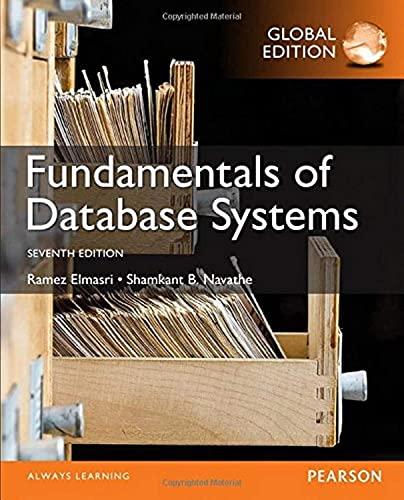Question
Use Table 4.2 data from the data file to complete Ch 4 Computer Activities. Next, and on the same document, center a title and label
 Use Table 4.2 data from the data file to complete Ch 4 Computer Activities. Next, and on the same document, center a title and label it, 'Comprehension Questions", and answer the following questions.
Use Table 4.2 data from the data file to complete Ch 4 Computer Activities. Next, and on the same document, center a title and label it, 'Comprehension Questions", and answer the following questions.
On a sheet of paper, write the two composite score columns next to each other. In the first column, list the original composite scores (COMPSCR). In the second column, list the composite T-scores. Rank the scores in each column from 1 to 12, assigning 1 to the highest score and 12 to the lowest score. Assume you are going to assign grades to the students as follows: A to rank 1; B to rank 2; B to rank 3; C+ to rank 4; C to ranks 5, 6, 7, and 8; C to rank 9; D+ to rank 10; D to rank 11; and F to rank 12. Answer the following questions:
What level of measurement do these data represent (i.e., nominal, ordinal, interval, ratio)?
What is the mean score for each examination?
What is the median score for each examination?
What is the mode for examination 2?
What is the range for each examination?
What is the standard deviation for each examination?
7.Are the rankings the same for the two composite distributions?
8.How many grades are different between the two distributions?
9.Determine what is unusual about student 1s performances on the tests.
10.What is strange about student 2s performances? How do the performances of these two students differ, and how are they the same?
11.What grades would be assigned to these two students if the total of the raw scores were used to determine grades?
12.What grades would be assigned to these two students if the total of the T-scores were used to determine grades?
13.Why are your answers to questions 11 and 12 different?
14.Based on your answers to questions 9 and 10, where should these two students total performances place them (approximately) in the class?
15.What are the means and standard deviations of the four T-score distributions, to one decimal place?
Use the following directions to answer items 1 through 15.
Open RStudio.
Install any necessary RStudio packages.
For Week 3, we do not require any additional packages.
Set up your RStudio workspace.
In the RStudio menu bar, click on File New File R Script.
On the first line of the R Script (upper left pane of RStudio), type
#Week 3
Enter the variable names (STUDENT, EXAM1, EXAM2, EXAM3, and EXAM4) and values found in
Table 4.2 into a spreadsheet and create a csv file named testscores to be imported into R.
Import testscores into R (Week 2).
You should see the testscores data frame listed under the Environment tab (upper right pane of RStudio).
Enter the following RScript commands to obtain descriptive statistics to answer items 1 through 6:
#mean
mean(testscores$EXAM1)
mean(testscores$EXAM2)
mean(testscores$EXAM3)
mean(testscores$EXAM4)
#median
median(testscores$EXAM1)
median(testscores$EXAM2)
median(testscores$EXAM3)
median(testscores$EXAM4)
#range
range(testscores$EXAM1)
range(testscores$EXAM2)
range(testscores$EXAM3)
range(testscores$EXAM4)
#sd
sd(testscores$EXAM1)
sd(testscores$EXAM2)
sd(testscores$EXAM3)
sd(testscores$EXAM4)
TABLE 4.2 Base 10 and Natural Log Data From Table 4.1 The antilog of the mean of the log transformed scores is equivalent to what is called the geometric mean. The geometric mean can also be calculated directly as the nth root of the product of n scores (where n= the number of scores). The formula for the geometric mean is nXi where the symbol is a mathematical operation to multiply all the numbers in the list. That is, to directly calculate the geometric mean, calculate the product of all the scores and then take that product to the 1 power. To illustrate, for the data in table 4.2, the product of the seven scores =33.931.229.627.024.725.023.0=12,005,342,799.84. Clearly these calculations can quickly result in very large numbers and should be done using a computer. The next step is to take the product to the 1 power, which in this case is 12,005,342,799.841n or 27.5 seconds. Compare this to the antilog of the transformed means in table 4.2. Summary Measures of central tendency are values that describe the central characteristics of a set of data. It is essential to know the central tendency of a set of scores in order to evaluate any of the raw scores in the set. The three typical measures of central tendency are the mode, the median, and the mean. The mode provides a quick estimate of central tendency for all types of data. The median can be used on ordinal data or when the data are badly skewed. The mean is the preferred measure of central tendency for interval or ratio datia that are normally or almost normally distributed. When the data are normally distributed, the three measures of central tendency all fall at or near the same value. When the data are skewed, they are often transformed. If the data are log normal, a logarithmic trans formation is commonly employed. The antilog of the mean of the log transformed scores is the geometric mean
Step by Step Solution
There are 3 Steps involved in it
Step: 1

Get Instant Access to Expert-Tailored Solutions
See step-by-step solutions with expert insights and AI powered tools for academic success
Step: 2

Step: 3

Ace Your Homework with AI
Get the answers you need in no time with our AI-driven, step-by-step assistance
Get Started


